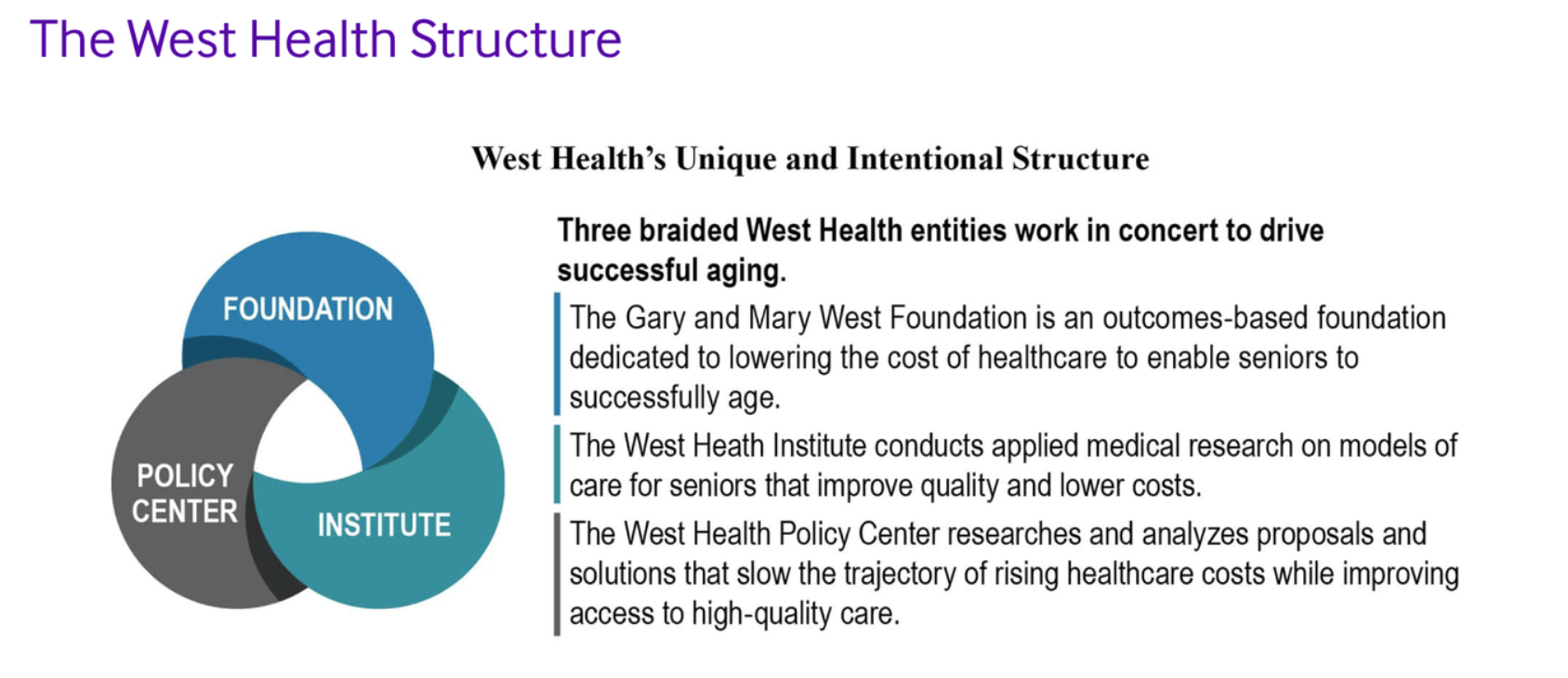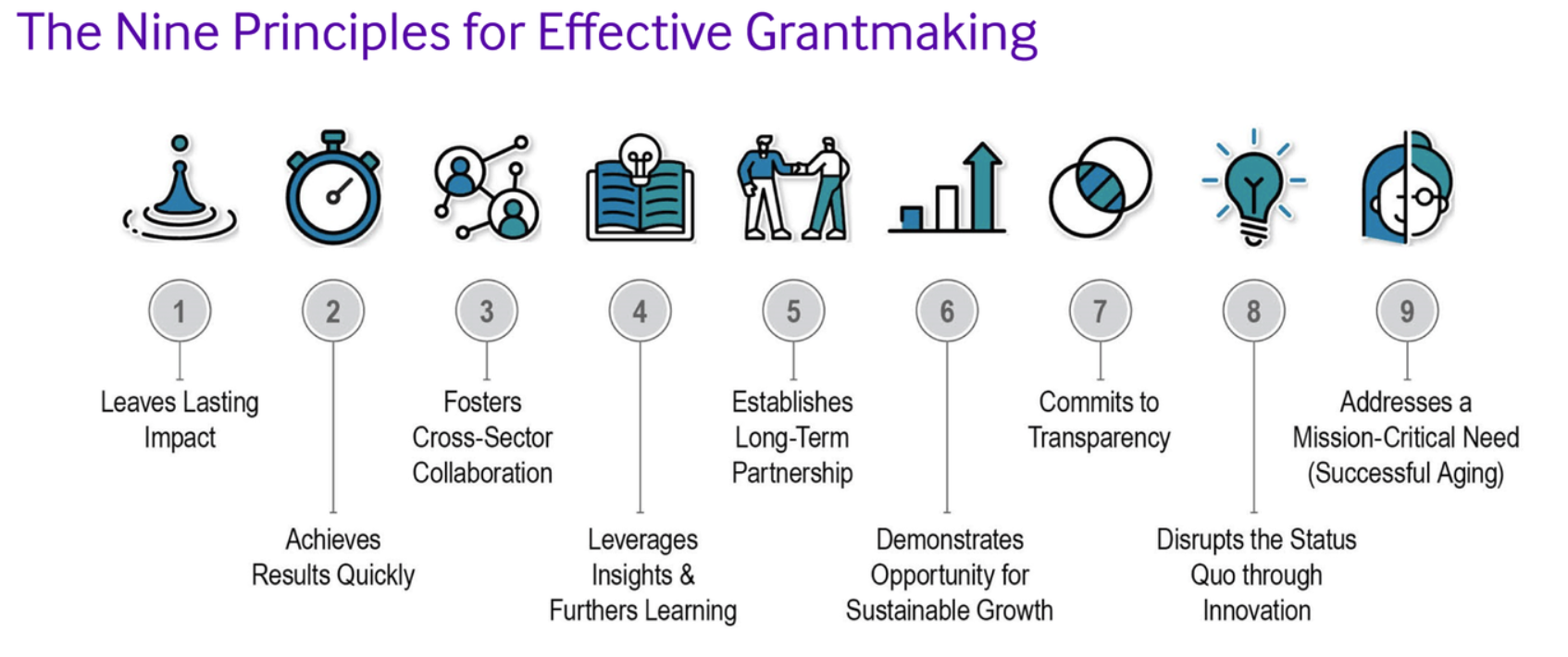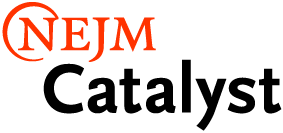Healthcare costs in the United States are simply untenable, threatening the financial health and personal well-being of Americans. Domestic spending on healthcare quadrupled from 1980 to 2018 and now accounts for 17% of GDP and 24% of government spending. Yet health outcomes in the U.S. lag well behind those in European nations spending half what the U.S. spends per capita.1
Legislative efforts to control costs and improve patient outcomes are typically stymied by an entrenched cabal of special interest and health industry groups pooling money to increase their successful influence with policy makers, brazenly protecting the status quo.2 Similarly, market-based competitive efforts to reduce costs and drive value are routinely thwarted by monopolies and rampant consolidation — both horizontal and vertical — across multiple sectors of the U.S. health system.
Without question, the U.S. has reached a point at which the healthcare free market is failing the financial and medical health of the economy and the American people.
Charitable foundations historically have shied away from healthcare reform,3 in part due to concerns around violating Internal Revenue Service (IRS) rules prohibiting foundation lobbying as well as the complexities of wading into the quagmire of health reform. But recently, some entrepreneurial foundations have found unlikely co-venture partners in healthcare reform: private players in the healthcare industry with a self-interest in disrupting counterproductive market forces that promote inefficiencies in their supply chains.
The Evolving Role of Philanthropy in Social Enterprise Joint Ventures
Program-related investments (PRIs) have been an instrument for social-impact investment, dating back to the U.S. Tax Reform Act of 1969, when the IRS defined the primary role of a PRI as accomplishing a foundation’s philanthropic goals when generating income is not a significant purpose.4 Foundations such as Ford, Rockefeller, MacArthur, and Packard began offering below-market-rate loans designed to advance charitable missions, traditionally by investing in smaller tax-exempt nonprofit organizations. More recently,5 foundations such as Gates have leveraged PRIs to fund for-profit start-ups with societal benefits in developing nations, which would otherwise have trouble attracting private financing.
Now, some newer foundations with a business mindset are launching novel social enterprises via joint ventures with the private sector. In 2006, Gary and Mary West committed proceeds from the sale of their telecommunications company to endow the Gary and Mary West Foundation and evolve its mission to lower the cost and improve the quality of healthcare for America’s senior citizens. The number of Americans >65 years of age is projected6 to soon surpass those ≤18 years of age for the first time in history — yet <1% of the 107,000 private foundations in the U.S. are dedicated to its fastest-growing demographic sector.7 To address the healthcare needs of this underserved population, the West Foundation architected a three-part institutional structure to leverage the impact of its grant-making (Figure 1).
Figure 1:

West Foundation’s Nine Principles of High-Impact Grant-Making and Venture Philanthropy
Like every successful business, foundations are typically guided by a set of principles for evaluating funding opportunities, whether or not those guidelines are codified. The West Foundation’s grant-making and PRI priorities are driven by a determination to disrupt and transform the overpriced and underperforming healthcare market serving older Americans. The West Foundation’s criteria and guidelines for making grants or PRIs are firmly rooted in the DNA of the founders’ entrepreneurship and business best practices. Like other charitable giving institutions founded by successful entrepreneurs, the West Foundation’s grounding in the business world positioned it well to assess and enter into collaborations with private-sector partners.
Without question, the U.S. has reached a point at which the healthcare free market is failing the financial and medical health of the economy and the American people.
Through trial and error, the West Foundation discovered that once it entered into private-sector joint ventures, its investments were subject to market forces that were largely beyond its control. Unforeseen market forces are the humbling X-factor that, while difficult to build into any investment algorithm, often dictate the success or failure of any joint venture.
The West Foundation’s investment principles have evolved over 15 years of work. These principles have developed organically and will in all likelihood continue to evolve. Individually, these principles are not unique to the organization, and no single criterium guides the foundation’s decision-making. But the interrelationships between these nine principles reflect the West Foundation’s attunement to both the public good and the real-world demands of the marketplace.
As its pipeline for venture philanthropy expands, the West Foundation continues to rely on these principles for guidance in making risk-benefit assessments. The foundation does not shy away from risk, knowing that, when seeking to disrupt the behemoth of profit-driven healthcare, failure rates can be high. The function of PRIs — to make non-collateralized funding available at below-market interest rates that banks and social venture funds cannot offer — is inherently risky. While the West Foundation strives to realize a measurable return across PRIs and a traditional grant-making portfolio (enabling the foundation to leverage investment capital and remain an evergreen player in social lending), its return on investment (ROI) is measured in broader terms than those of private-sector social lenders. On the West Foundation’s ledger, a grant can only be accounted as a success if it demonstrably advances the foundation’s mission to lower healthcare costs and improve access to high-quality, affordable services that preserve and protect the dignity, quality of life, and independence of America’s seniors.
To that end, the West Foundation looks for nine must-have characteristics when evaluating a grant-making or PRI opportunity (Figure 2).
Figure 2:

A nonprofit opportunity must:
- Address a mission-critical need (broadly, successful aging)
- Have a lasting impact
- Achieve results quickly
- Foster cross-sector collaboration
- Establish long-term partnerships
- Leverage institutional insights and further learnings
- Demonstrate opportunity for sustainable growth
- Commit to transparency
- Disrupt the status quo through innovation
West Health’s Investment in Civica Rx: A Model for Successful Venture Philanthropy
The West Foundation’s decision to invest capital and institutional resources in Civica Rx offers a case study of how mission-driven and business-based assessment criteria inform its involvement in successful social enterprise to disrupt and transform a large and chronically dysfunctional healthcare sector.
Civica Rx was organized to remedy a chronic market failure in the supply chain of generic drugs that hospitals and their patients — who are disproportionately older adults — depend on. For two decades, hospitals had struggled with ubiquitous shortages of life-saving generic, injectable drugs that are required to perform operations and protect patients from infections.
A grant can only be accounted as a success if it demonstrably advances the foundation’s mission to lower healthcare costs and improve access to high-quality, affordable services that preserve and protect the dignity, quality of life, and independence of America’s seniors.
To some degree, these shortages were consequences of well-intended federal regulation: the Drug Price Competition and Patent Term Restoration Act of 1984. More commonly known as the Hatch-Waxman Act, the law was designed to make generic drugs more widely available and affordable. However, in the past 40 years — and in the absence of further legislative reform — market forces eventually reduced supply by lowering profit margins for manufacturers, resulting in a “race to the bottom,” leaving only a few manufacturers (or a single manufacturer) for some drug products. This hyper-concentration of production capacity for certain drugs made the supply chain vulnerable to crippling shortages resulting from supply and manufacturing disruptions when a factory shutdown left no alternate source of supply or, in some notable cases,8 when unscrupulous drug manufacturers acquired smaller companies to reduce competition and then reduced supply to profit from predatory pricing that they could impose for a scarcity they had created. Generic drug shortages, whether intentional or not, were a market-induced public health crisis that cried out for a disruptive response.
Desperate to ensure a dependable and affordable supply of affordable generic injectables, a consortium of seven of the nation’s largest health systems — CommonSpirit Health, HCA Healthcare, Intermountain Healthcare, the Mayo Clinic, Providence St. Joseph Health, SSM Health, and Trinity Health — representing >1,000 hospital pharmacies nationwide, joined forces to create the first nonprofit drug supply chain: Civica Rx. This consortium’s goal was to create a buyer’s club for hospital pharmacies, turning the traditional pharma model on its head by offering generic drugs at the least expensive, rather than most expensive, price point.
Civica Rx planned to secure the generic drug supply chain by recruiting major hospital systems that would commit to long-term buying contracts, thereby guaranteeing demand for low-cost manufacturing (re)entrants that might not otherwise manufacture needed drug products. If successful, Civica Rx’s strategy would invert the existing manufacturer-customer balance of power and market structure.
In advance of its launch, Civica Rx’s original organizers approached three private foundations all committed in their missions to lowering to lower the cost of healthcare and/or drugs for American patients. The Gary and Mary West Foundation, the Peterson Center on Healthcare (established by the Peter G. Peterson Foundation), and Arnold Ventures (formerly the Laura and John Arnold Foundation) joined the seven health systems to create the novel nonprofit organization and to take on important governance roles.
Alongside matching start-up contributions from the founding health systems, the three foundations each contributed $1 million in the form of a traditional grant and pledged a program-related investment of up to $9 million at submarket interest rates. Finally, the leaders of the foundations were offered three of Civica Rx’s 10 unpaid board seats, thus sealing the stewardship of Civica Rx’s not-for-profit mission and ensuring transparency and adherence to the public interest.
As described by Dredge et al.,9,10 Civica Rx’s “disruptive collaboration” created a new model for drug manufacturing as a not-for-profit “healthcare utility” — a “public-interest asset” that served the public good rather than the financial interests of stockholders. Incorporated as a nonstock, nonprofit 501(c)(4) social welfare organization, Civica Rx aspired to combine “private-sector efficiency and public-sector societal equity at scale.”
The West Foundation was intrigued by Civica Rx’s innovative vision for catalyzing large-scale nonprofit drug manufacturing and its potential to remedy a costly inefficiency in the drug supply chain. The foundation’s leadership was also cognizant that the drug manufacturing supply chain is complex, opaque, and deeply entrenched, and that any attempt to disrupt it would face steep challenges.
In weighing the potential risks and rewards of this investment opportunity, the West Foundation evaluated Civica Rx’s business plan against the nine must-have benchmark criteria mentioned above.
Transforming healthcare in America is a high-stakes race against the demographic surge in the aging population and a cutthroat battle against the entrenched interests that profit from the status quo and that rely on scare tactics to exploit the public’s fear of change.
Address a Mission-Critical Need
The West Foundation’s mission is to reduce overall healthcare costs and improve care for older adults in the United States. Scarce drugs and scarcity pricing negatively impact overall costs as well as health outcomes for the largest consumers of hospital-based healthcare, namely, seniors.11 Increased drug prices — and the resources required to source them during a shortage — contribute significantly to higher overall costs in the health system at large. Meanwhile, shortages of injectable drugs degrade the delivery of critical care in the hospital, increasing morbidity and mortality as a result of delayed procedures, inferior medication substitutions, and higher infection rates.12
- Civica Rx’s goal of ensuring a dependable and affordable supply of critical generic drugs aligned with the West Foundation’s mission of reducing costs in service to improving senior’s access to quality and affordable healthcare.
Have a Lasting Impact
The West Foundation invests its capital and other institutional assets for the long haul and is focused on solutions that are far-reaching and sustainable for the most vulnerable and underserved populations.
- Civica Rx’s business plan was far-reaching and well planned. The organization was proposing a bold move to permanently disrupt and disintermediate a monopolistic supply chain by founding the first nonprofit drug manufacturer.
Achieve Results Quickly
Speed of execution is essential to success. Transforming healthcare in America is a high-stakes race against the demographic surge in the aging population and a cutthroat battle against the entrenched interests that profit from the status quo and that rely on scare tactics to exploit the public’s fear of change. Therefore, the West Foundation is averse to investments that cannot produce results in the near term. In the course of the foundation’s grant-making and PRIs, short-term, mid-term, and long-term milestones are built in for the purpose of ensuring progress, urgency, and accountability.
- Despite its sector-wide disruptive goals, Civica Rx also projected ambitious but achievable short-term goals, including bringing its first generic drug to market within 1 year of launch.
Foster Cross-Sector Collaboration
Disrupting the status quo of a financially entrenched and politically powerful sector such as the U.S. healthcare industry is a heavy lift. No one sector, organization, group, or individual can go it alone against an industry as large and as entrenched as U.S. healthcare. Innovators and foundations can best aspire to catalyze systemic change in healthcare through cross-sector collaborations in which business and nonprofit partners can combine their respective expertise and skill sets.
- Civica Rx had assembled a cross-sector consortium of health systems, hospital, pharmacies, and experienced drug manufacturing contractors and was now soliciting the engagement of leading foundations practicing venture philanthropy.
The West Foundation’s grant-making and PRI decision-making is driven by a conviction that innovation is necessary, but not sufficient, to affect transformational change.
Leverage Institutional Insights and Further Learnings
The West Foundation favors grants and investments that leverage its knowledge base to add value to its collaborations with program grantees and PRI partners. The West Foundation leverages its West Health Institute’s applied medical research and its policy center’s data-driven efforts to yield privileged insight into the cost drivers in the U.S. health system, including hospital services and drug pricing.
- Understanding the flows of dollars, services, and goods (including generic drugs) enabled the foundation to grasp the opportunities and challenges facing Civica Rx. The foundation was confident that it could work effectively alongside the original hospital partners and make contributions beyond a financial investment. Expanding its touch points with Civica Rx’s broad swath of U.S. hospitals would enhance the venture philanthropists’ institutional long-term capacity to drive change and reduce costs as hospitals represent roughly one-third of U.S. annual healthcare spending.
Establish Long-Term Partnerships
The West Foundation’s venture philanthropy is informed by the oft-quoted African proverb: “If you want to run fast, run alone. If you want to run far, run together.” Healthcare reform is a marathon, requiring a team of reliable, effective, and long-term partners.
- The foundation and all the funding partners in Civica Rx understood that launching the first-ever nonprofit drug manufacturing and distribution company required significant capital, cross-sector collaborators, and a long-term commitment. The financial plan, including PRI loan terms, extended a decade into the future.
Demonstrate Opportunity for Sustainable Growth
A venture philanthropist’s effectiveness as an agent of systemic change rests on the sustainability and scalability of its investment portfolio. Only with ROI can an asset pool grow, along with the capacity to participate robustly in future grant-making, PRIs, and joint social ventures. The key to maintaining social lending capital lies in vetting the sustainability and scalability of the projects to support beyond an initial grant or investment it supports.
- Civica Rx’s seven major health systems comprised 1,400 hospitals and hospital pharmacies nationwide, with short-term plans to enlarge that network to include 39 health systems representing approximately 30% of licensed hospital beds in the United States. The Civica Rx network of health systems represented a large-scale, installed customer base for the generic drugs it planned to provide at a low cost to its member hospitals.
- Civica Rx’s founding health systems made investments consistent with the funding partners, which increased the funders’ confidence that they were entering into collaboration on an equal footing and with strong financial partners who brought both solid balance sheets and a deep knowledge base in hospital management to the venture.
Commit to Transparency
Drug pricing is intentionally veiled behind opaque layers of bogus “discounts,” rebates, and coupons and is further obscured by binding nondisclosure agreements with pharmacy benefit managers (PBMs) and other intermediaries, thereby shielding the profit margins of pharmaceutical manufacturers and others from public scrutiny. The West Foundation is dedicated to exposing artificially complicated sectors (e.g., healthcare) and to fostering transparency.
The culture of the West Foundation is to have open, honest dialogue with grantees about strategic goals, programming, and budget details, with regular reporting and site visits typically required.
- Civica Rx demonstrated a commitment to transparency by offering three of its 10 board positions to the leaders of the three partnering philanthropies. Collectively, these philanthropy leaders would bring a wealth of nonprofit governance experience and decades of dedication to the public trust to their board positions, ensuring the transparency of Civica Rx’s nonprofit manufacturing and distribution model and the durability of its public interest mission.
Disrupt the Status Quo Through Innovation
The West Foundation’s grant-making and PRI decision-making is driven by a conviction that innovation is necessary, but not sufficient, to affect transformational change. What older Americans need, and what the foundation looks for in its grant-making and PRIs, is disruptive innovation. Only disruptive innovation — deployed at scale — can overturn business as usual among the entrenched healthcare players who profit by opposing legislative reform and by perpetuating the status quo at the expense of consumers.13
- Civica Rx’s business plan embodied equal parts innovation (daring to conceive the first nonprofit generic drug company in the U.S.) and disruption (ensuring hospital pharmacies a reliable source of drugs, independent of unscrupulous suppliers).
Unforeseen Challenges and Opportunities
Civica Rx has turned out to be a successful investment for the West Foundation. Four years post-launch in an industry notorious for squeezing out new entrants, Civica Rx’s growth has outpaced even its most aggressive forecasts:
- Its distribution network has expanded to include >50 health systems, representing >1,400 hospitals in the United States.
- The company has supplied over 9 million vials or syringes of generic medications to hospitals, which have been used to treat up to 3 million patients.
- Civica Rx and its affiliated ventures are on track to produce up to 100 drugs by 2023, including affordable insulin priced at no more than $30 per vial.
Despite outperforming expectations, Civica Rx has had to navigate its share of speed bumps, detours, and course corrections. As with any market-driven enterprise, unforeseen market conditions presented Civica Rx with challenges and opportunities that no business plan or investment criteria could have anticipated.
Chief among those unforeseen market forces was Covid-19. The pandemic highlighted both the catastrophic consequence of breakdowns in the healthcare supply chain and the potential of public-private partnerships to respond rapidly and collaboratively to a public health emergency.
It’s not enough to declare oneself innovative and disruptive by charter; success is achieved through implementation.
Challenges
No matter how ironclad a go-to-market launch plan appears on paper, real-time market conditions will likely upend the plan. Civica Rx was not immune to market obstacles.
Manufacturing: Civica Rx had not planned to become a drug manufacturer. Rather, it had planned to outsource manufacturing to increase production capacity. As Civica Rx achieved scale, it became apparent that greater vertical integration to include manufacturing was required to ensure a robust and reliable supply chain.
Distribution: Civica Rx planned to disrupt installed supply chains and reduce costs by eliminating wholesalers or third parties and distributing directly to its hospital pharmacy customers. As with manufacturing, achieving scale also presented new distribution challenges to its many hospitals across the country. To resolve this issue, Civica Rx had to once again rethink its original business plan and rapidly create new distributor relationships to meet the just-in-time requirements of today’s modern healthcare delivery system.
U.S. Food and Drug Administration approvals: Civica had planned to reactivate production of generics that had already been approved but then “abandoned” (i.e., were not currently being manufactured). The manufacturing rights to the most valuable of these abandoned drugs were often only available for purchase inside expensive “baskets” of multiple drugs, most of which had no market value. Therefore, Civica Rx decided to pursue its own drug development capabilities via public-private partnerships.
The foundation learned the hard way that being “nonprofit” and “disruptive” did not magically solve the challenges of legacy market forces. Once enmeshed in adapting to the realities of the legacy infrastructure of generic drug manufacturing, distribution, and approval pathways, it could become difficult not to regress to the mean and become part of the problem rather than the solution. Here the foundation’s nine principles have served as a valuable reminder of the public-interest mission underlying this enterprise. Challenges will no doubt continue to emerge as Civica Rx grows and develops, requiring ongoing adjustments, recalibrations, and reassessments of our mission.
Opportunities
Notably, Civica Rx’s launch and rapid growth coincided with the ongoing pandemic. The growing company is currently supplying 11 medications needed for treating Covid-19, while also contributing over 3 million vials of medication to the national stockpile to help prevent future drug shortages.
During the pandemic — in a development that enlarged Civica Rx’s joint venture to include the public sector — the U.S. Department of Health and Human Services (HHS) provided Civica Rx with a $100 million grant to build a state-of-the-art drug manufacturing plant. This was one of the largest grants in HHS history and ensured that important drugs will be manufactured in the United States. Under this grant agreement, Civica Rx will also supply medications to the U.S. Department of Veterans Affairs and the U.S. Department of Defense. This $100 million infusion of capital also allowed Civica Rx to fast-track its plans to create its own manufacturing plant, which is now in late-stage construction in Petersburg, Virginia.
The Race Belongs to the Nimble, Mission-Driven, and Disruptive
When “pivot” became the universal business byword of the pandemic, Civica Rx showcased the incalculable value of nimbleness in response to a rapidly changing healthcare landscape.
It’s not enough to declare oneself innovative and disruptive by charter; success is achieved through implementation, which requires agility in navigating in real time through buffeting market forces. Agility optimizes an enterprise’s Darwinian fitness, first to survive and then to thrive. Most importantly, Civica Rx demonstrated how agility creates opportunities to gain new footholds in adjacent markets.
Bold Moves
For innovators looking to the Civica Rx example for insights into securing philanthropic investment in a healthcare venture, I would offer this parting prompt: Be bold. As the West Foundation applied its nine principles, it managed to also leverage like-minded foundations and to secure sizable public funding, despite a pandemic and entrenched market roadblocks.
Venture philanthropists are committed to changing the status quo — which, in healthcare or any other entrenched sector, is a steep climb. A novel technology or patent-protected discovery may have sizzle, but when you’re trying to foment social change, sizzle is rarely sustainable.
The status quo is perpetuated by the law of inertia, known in physics as Newton’s first law of motion: “An object will continue moving at its current velocity until some force causes its speed or direction to change.” If you aspire to transform the status quo, be innovative.
At the same time, be prepared to also be the bold and disruptive force that compels change.


